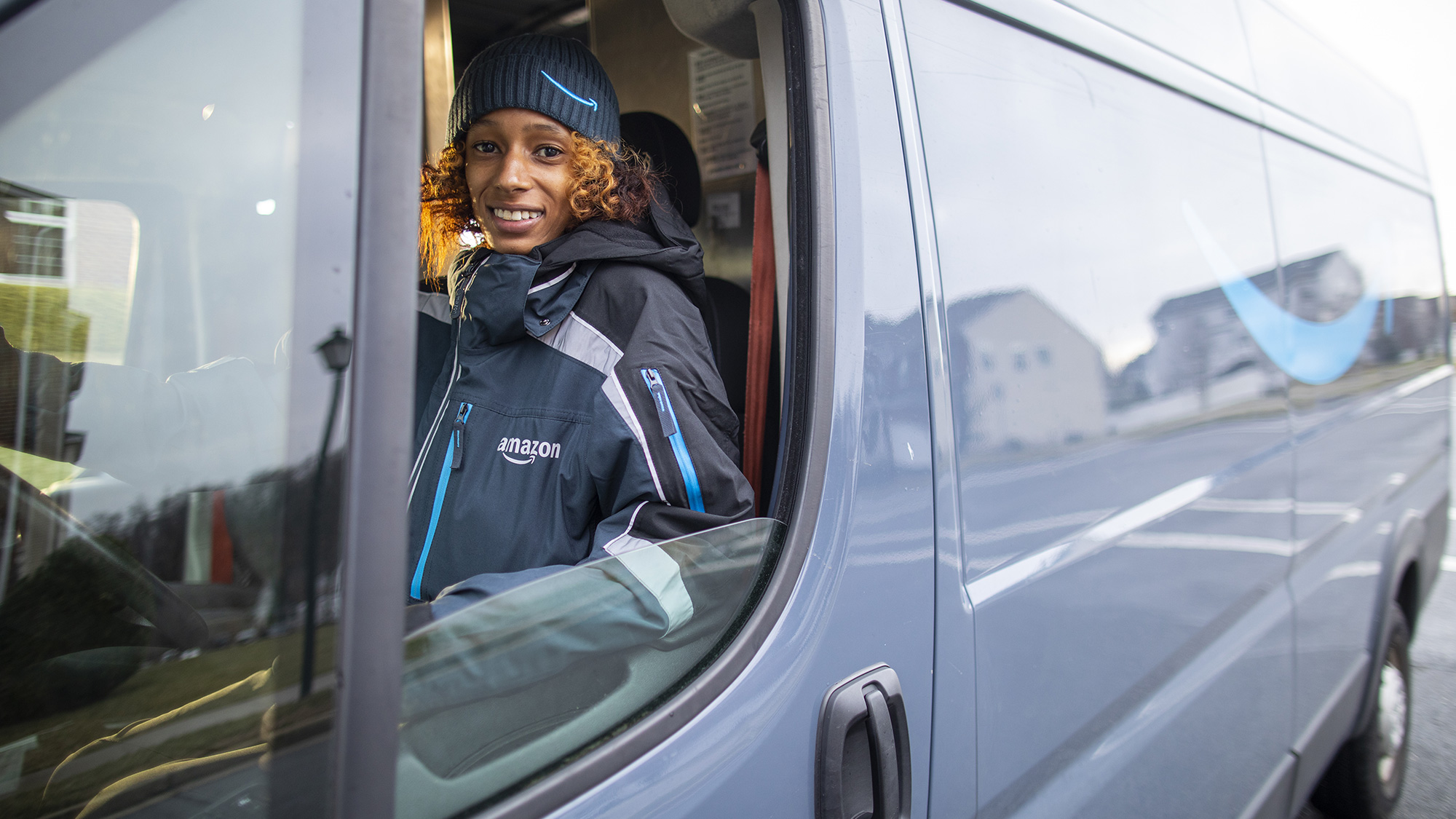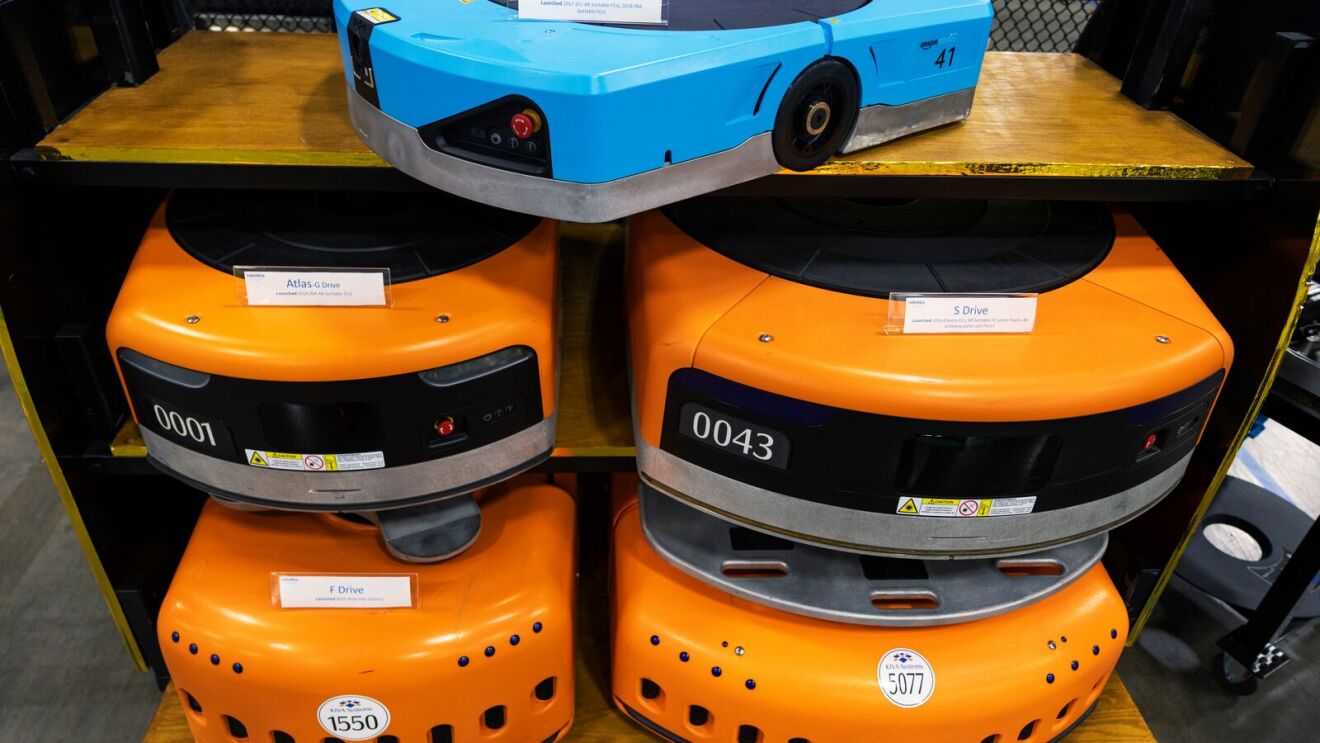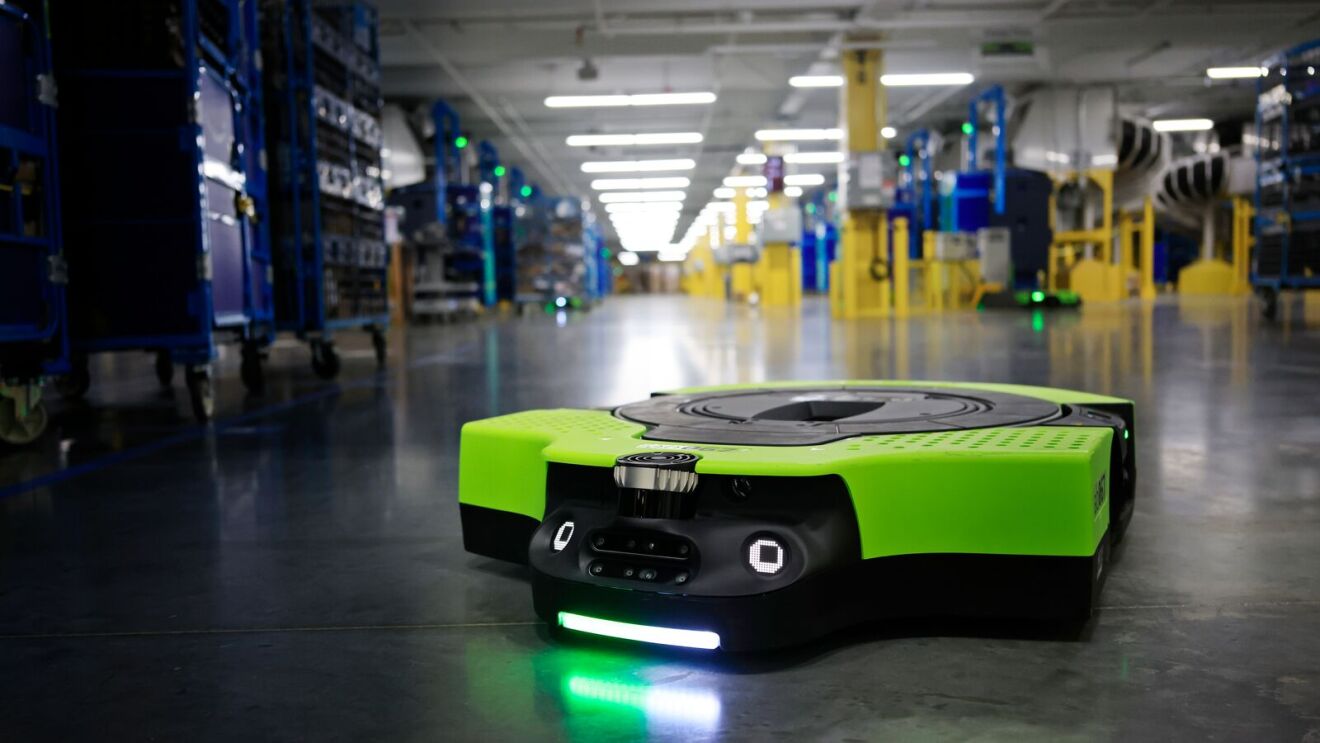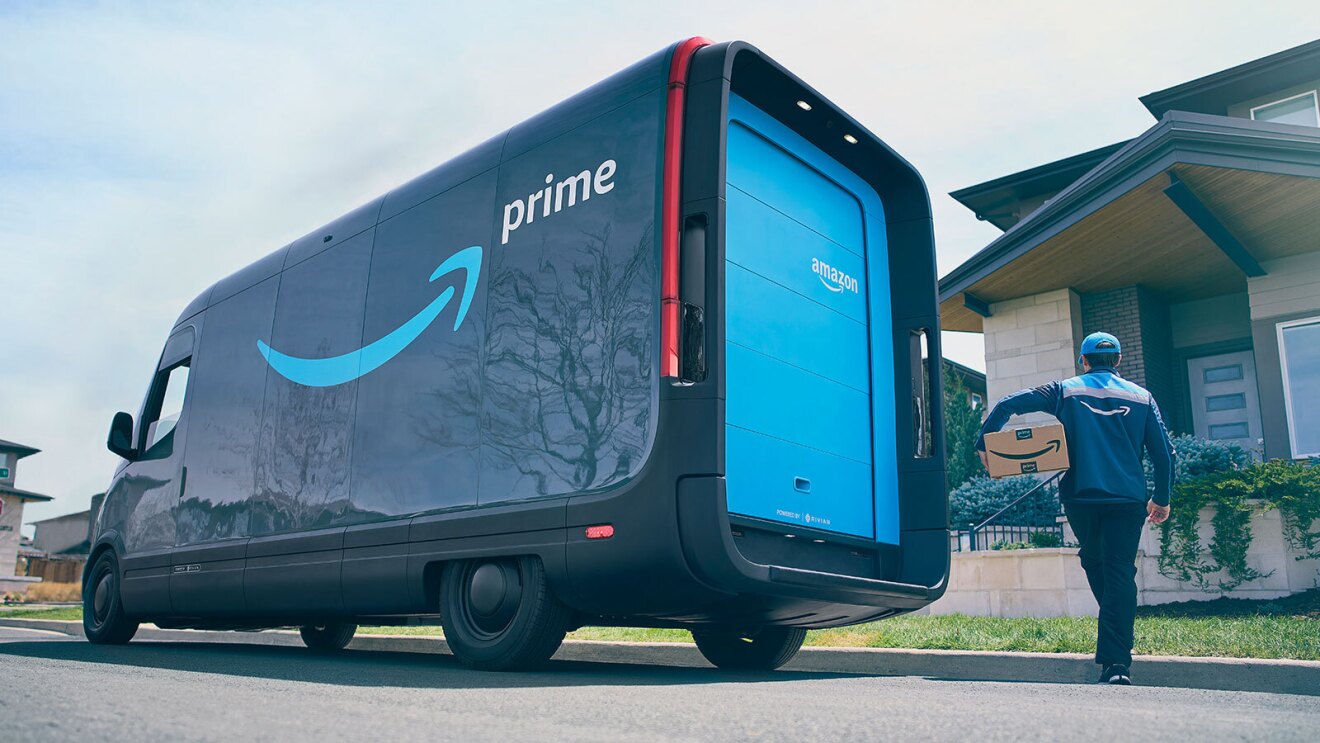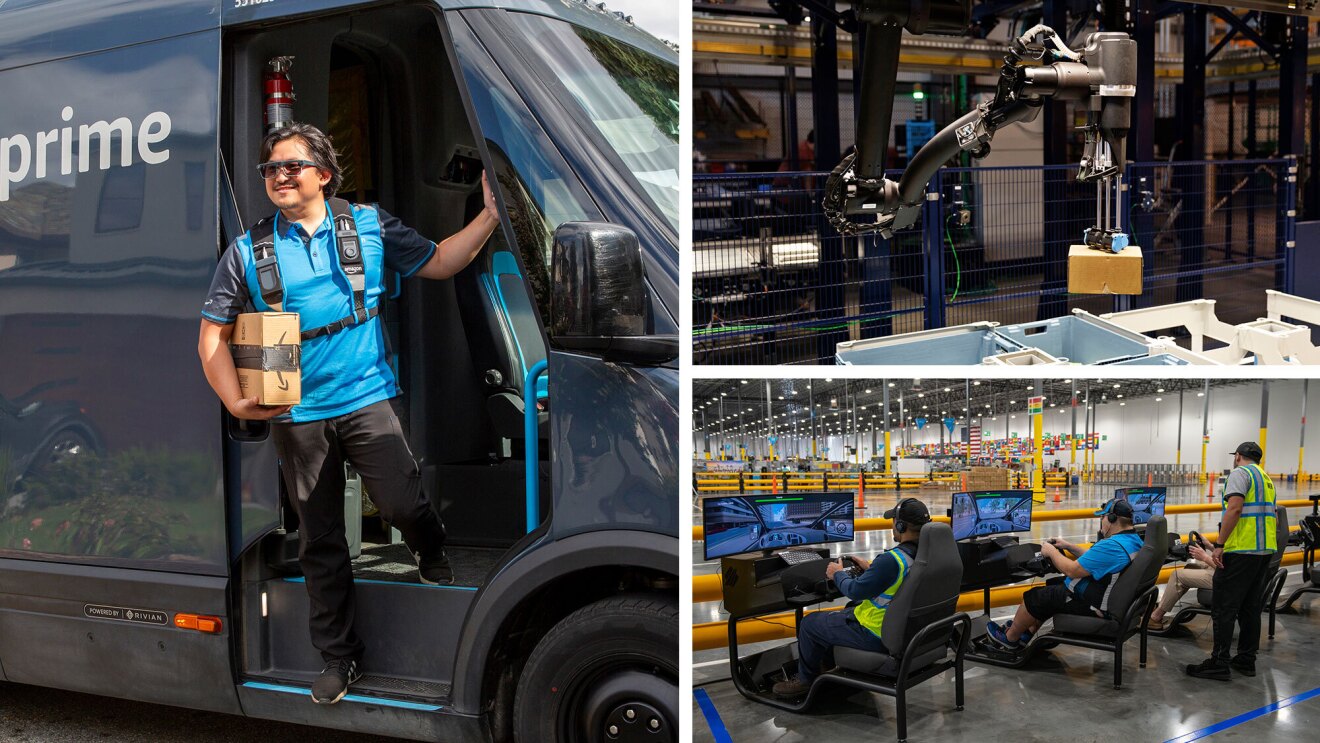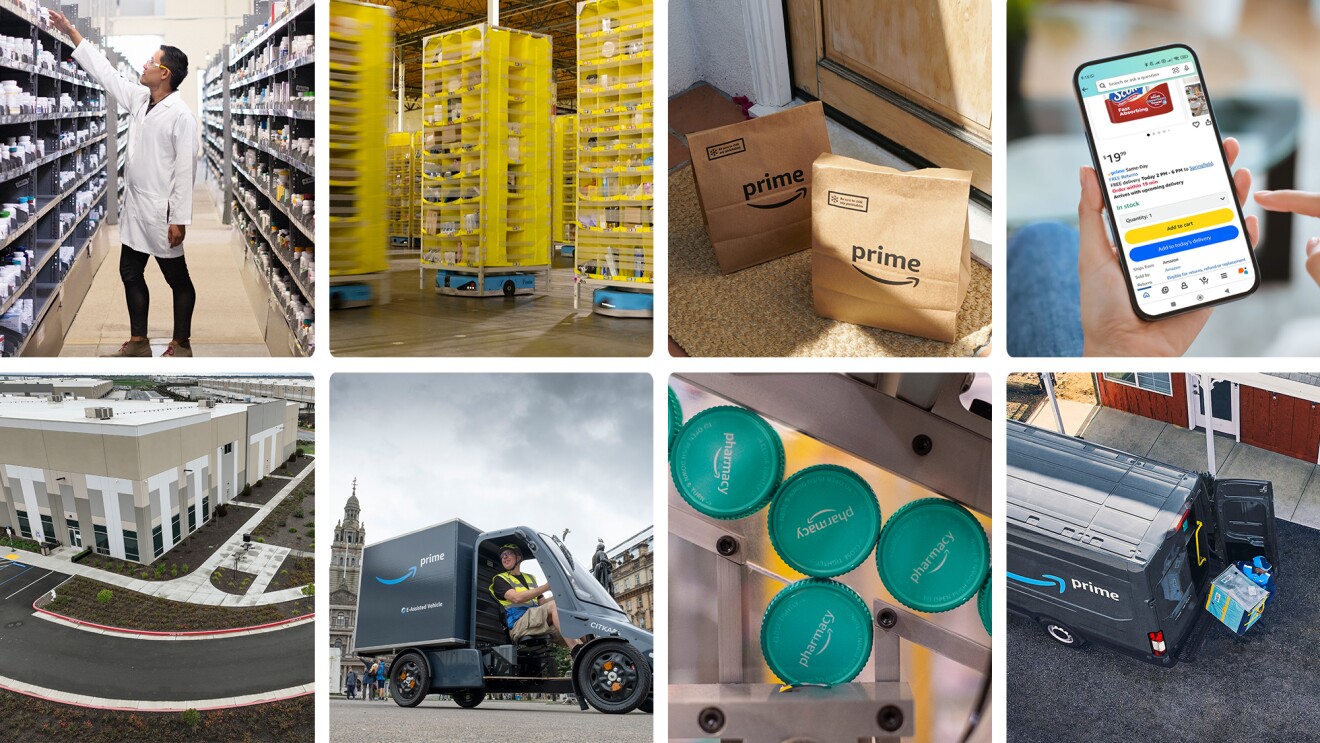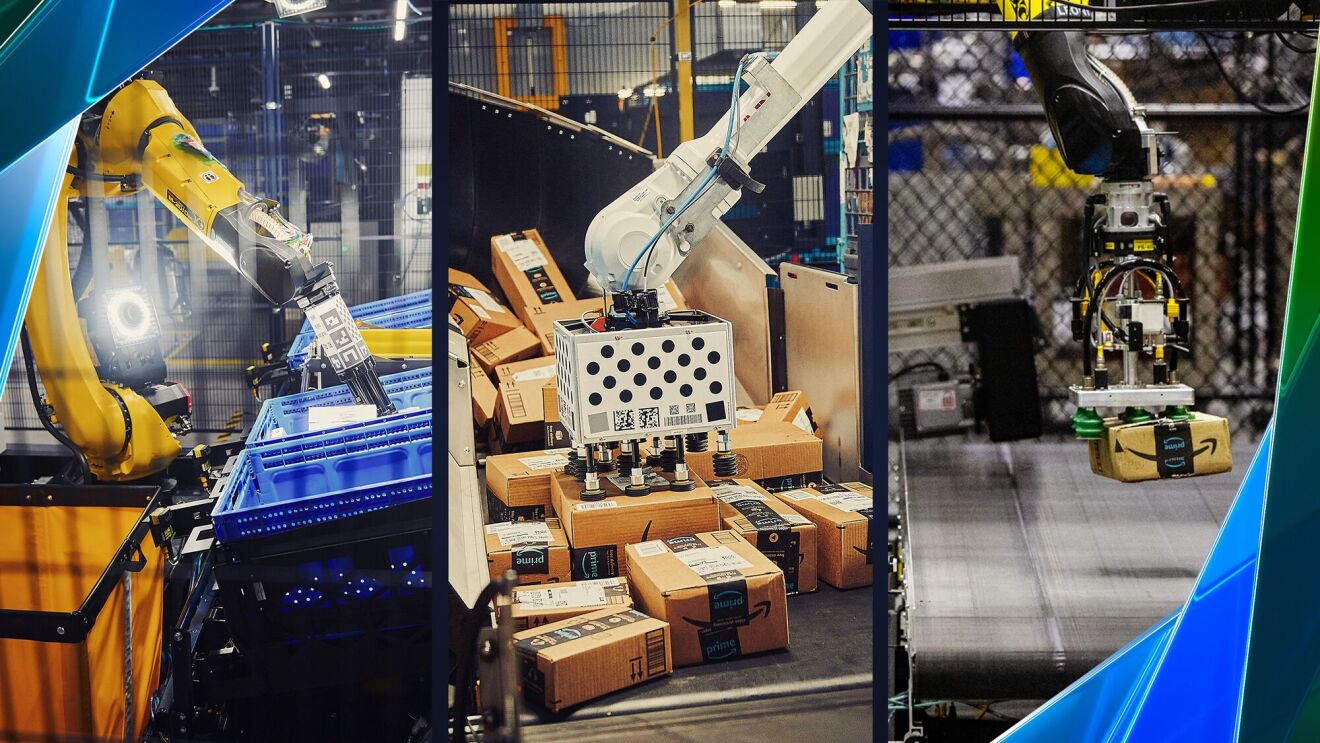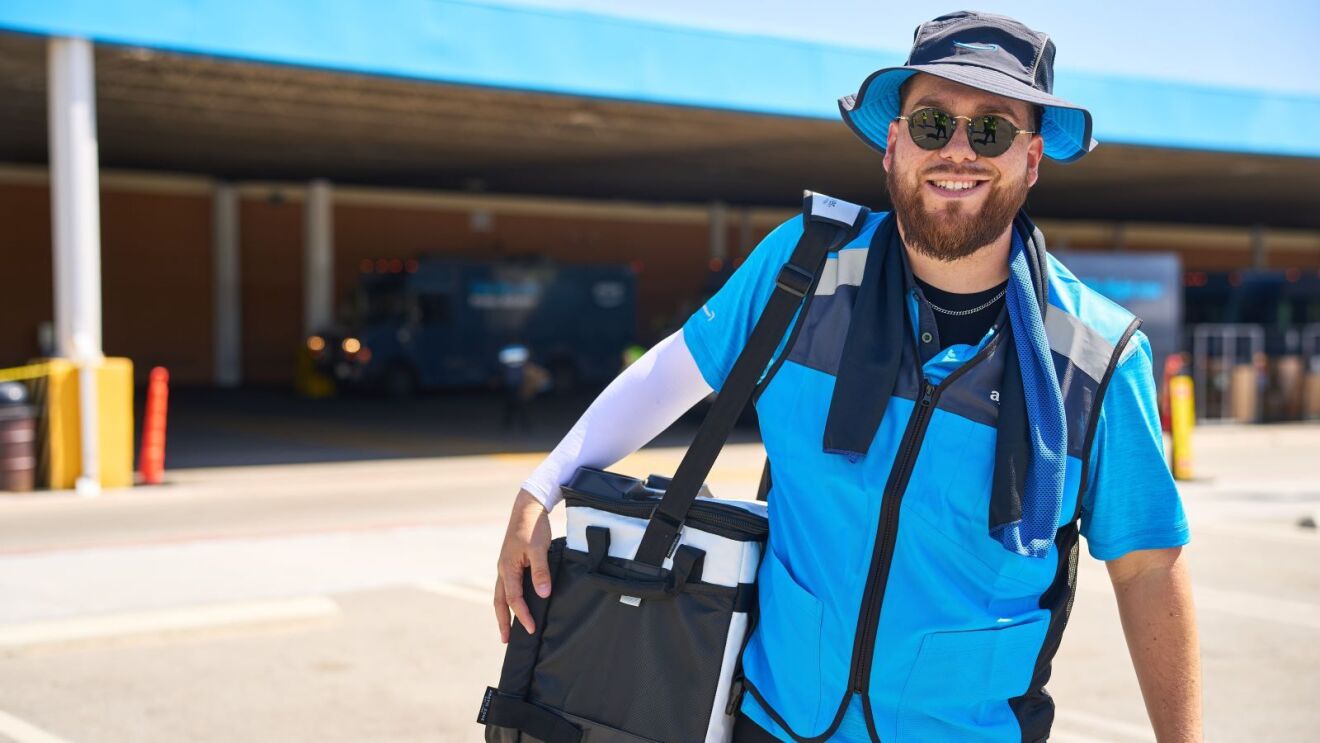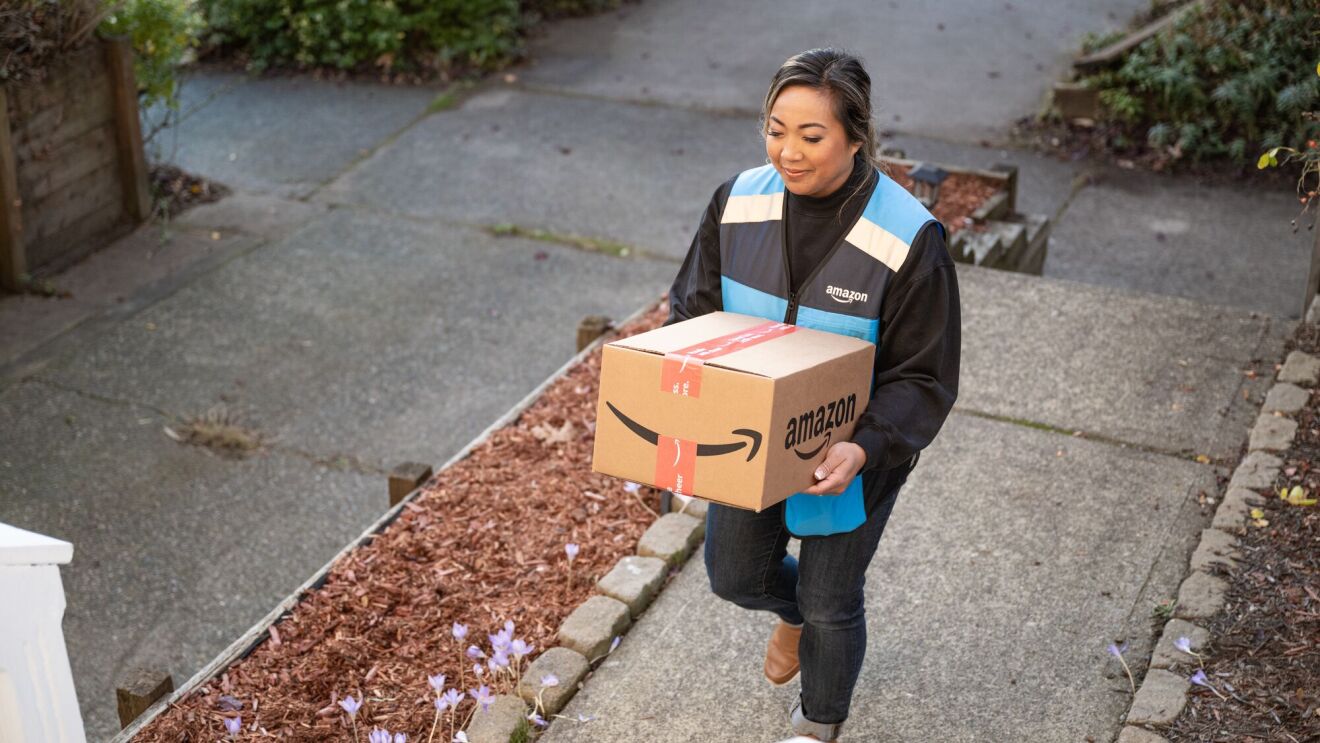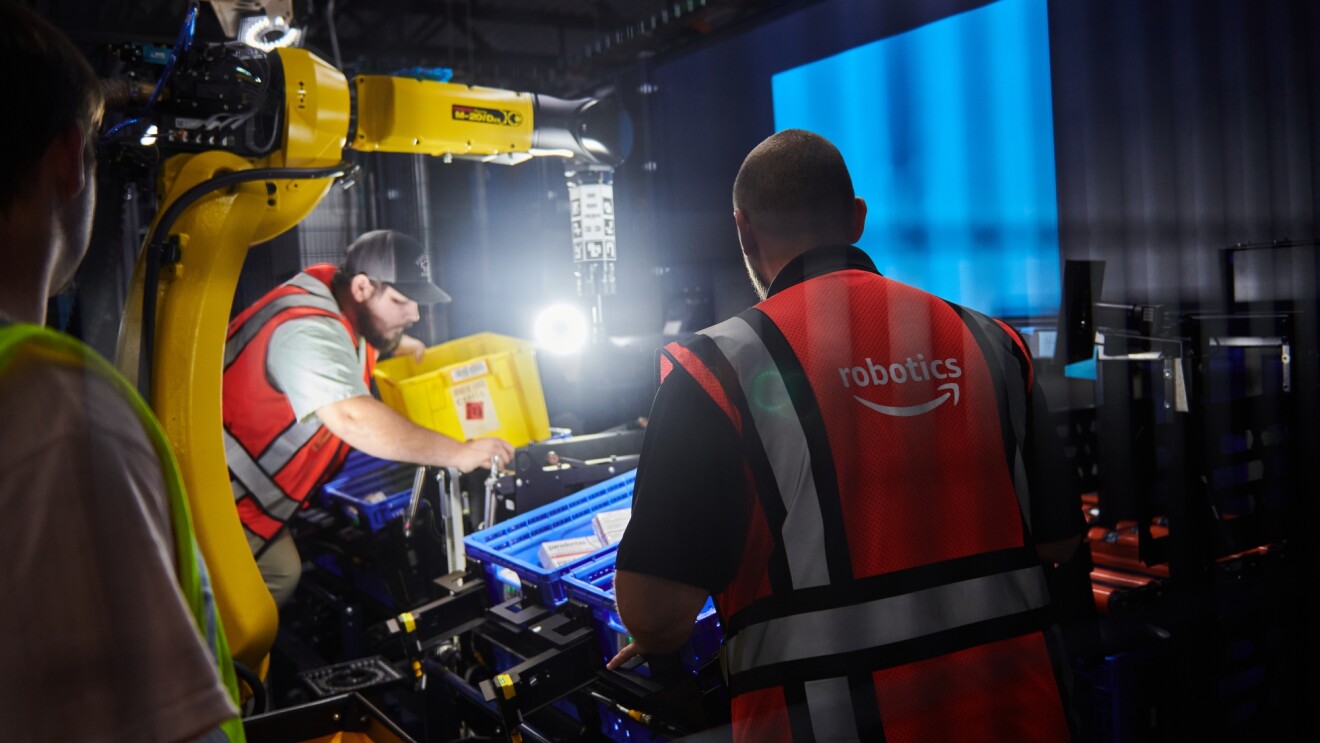Key takeaways
- Amazon has deployed its one millionth robot in its operations.
- A new generative AI foundation model will improve robot fleet travel efficiency by 10%.
- Technology advances support faster delivery times and lower costs for customers.
- Over 700,000 employees have been upskilled through training programs that prepare its workforce for the future.
I'm excited to share two significant milestones in Amazon's robotics and AI journey. We've just deployed our 1 millionth robot, building on our position as the world's largest manufacturer and operator of mobile robotics. This milestone robot was recently delivered to a fulfillment center in Japan, joining our global network that now spans more than 300 facilities worldwide.
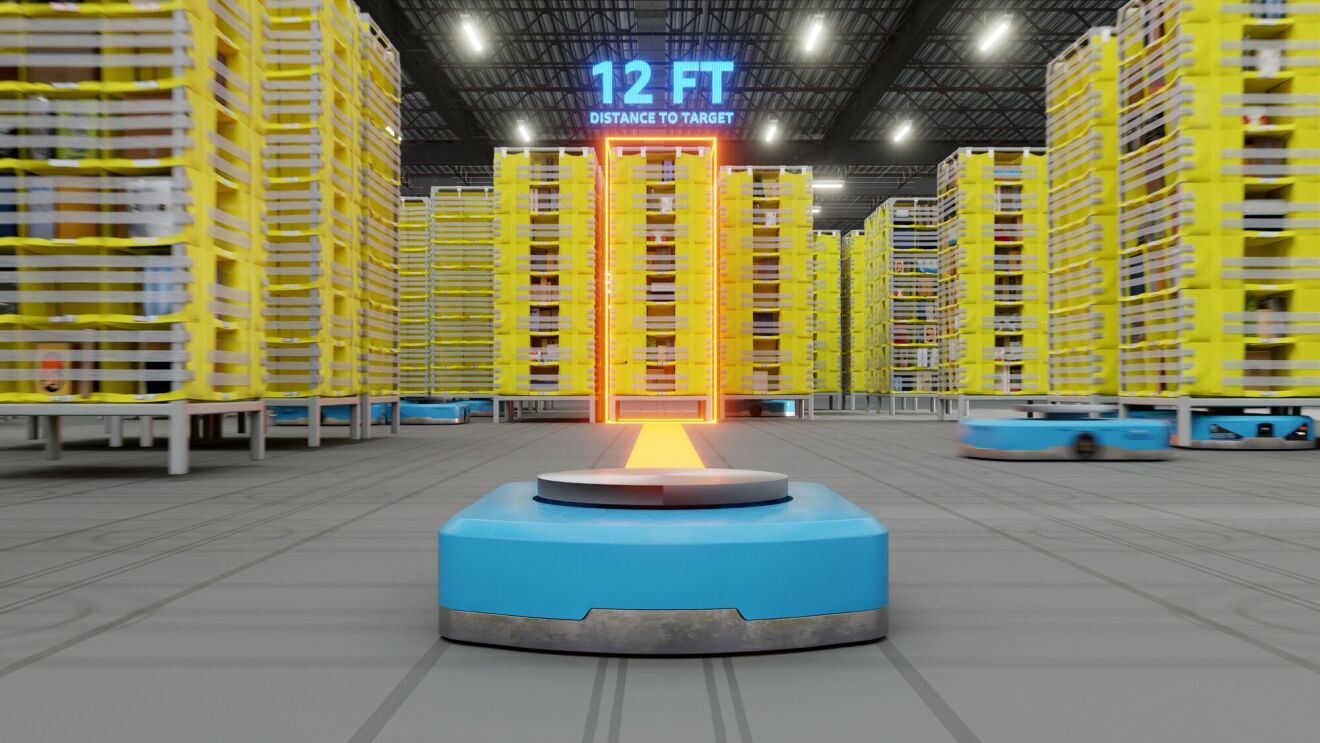
But that's only part of the story. We're also introducing a new generative AI foundation model we've designed to make our entire fleet of robots smarter and more efficient. Called DeepFleet, this AI technology will coordinate the movement of robots across our fulfillment network, improving the travel time of our robotic fleet by 10% and enabling us to deliver packages to customers faster and at lower costs.
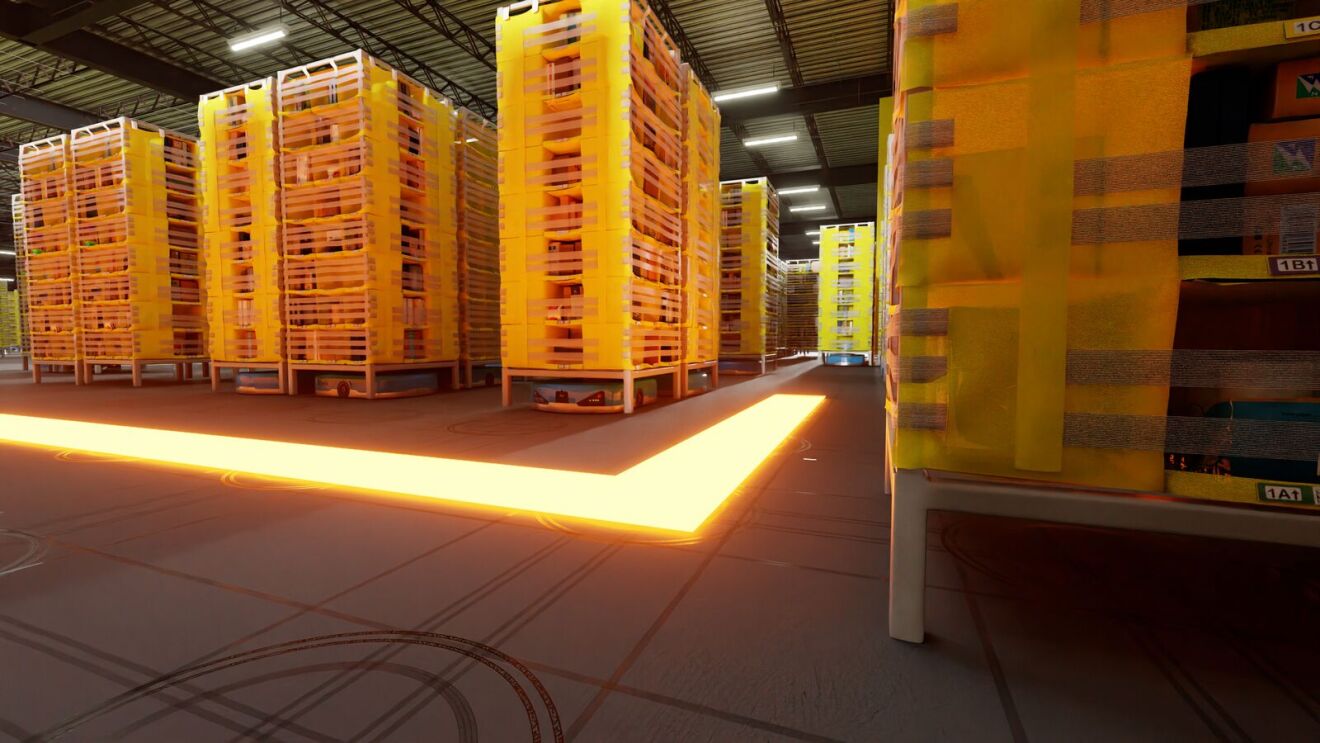
Making robots smarter
Think of DeepFleet as an intelligent traffic management system for a city filled with cars moving through congested streets. Just as a smart traffic system could reduce wait times and create better routes for drivers, DeepFleet coordinates our robots' movements to optimize how they navigate our fulfillment centers. This means less congestion, more efficient paths, and faster processing of customer orders.

Built using the company’s rich and extensive data sets of inventory movement within its sites and leveraging AWS tools, including Amazon SageMaker, this new AI model redefines fleet efficiency. It allows us to store more products closer to customers, leading to faster delivery and lower costs. And, because it is built on AI that learns and improves over time, it will continue to find new ways to optimize how our robots work together.
A decade of robotics innovation
I've had the privilege of watching our robotics journey unfold from the early days. We started in 2012 with a single type of robot that could move inventory shelves across warehouse floors. Today, we operate a diverse fleet of robots, designed to make our employees' jobs easier and safer, and our operations more efficient.
Our Hercules robots can lift and move up to 1,250 pounds of inventory. Our Pegasus robots use precision conveyor belts to handle individual packages. And Proteus, our first fully autonomous mobile robot, can safely navigate around employees in open and unrestricted areas of our sites while moving heavy carts filled with customer orders.
01 / 02
These robots work alongside our employees, handling heavy lifting and repetitive tasks while creating new opportunities for our front-line operators to develop technical skills. I'm particularly proud that since 2019, we've helped upskill more than 700,000 employees through various training initiatives, many focused on working with advanced technologies. In fact, at our next-generation fulfillment center, launched late last year in Shreveport, Louisiana, advanced robotics require 30% more employees in reliability, maintenance, and engineering roles.
Creating real-world value
DeepFleet represents our practical approach to AI innovation. Rather than pursuing technology for its own sake, we're focused on solving real problems. By reducing robot travel time by 10%, we're not just improving efficiency—we're creating tangible benefits: faster delivery times, lower operational costs, and reduced energy usage. This is how we're making generative AI work in the real world, delivering concrete value for both employees and customers. What makes our approach to robotics and AI unique is how we combine innovation with real-world impact. We manufacture our robots in the United States, working with local suppliers while deploying globally. This allows us to maintain high quality standards while creating a valuable feedback loop among our designers, manufacturing teams, and front-line employees.
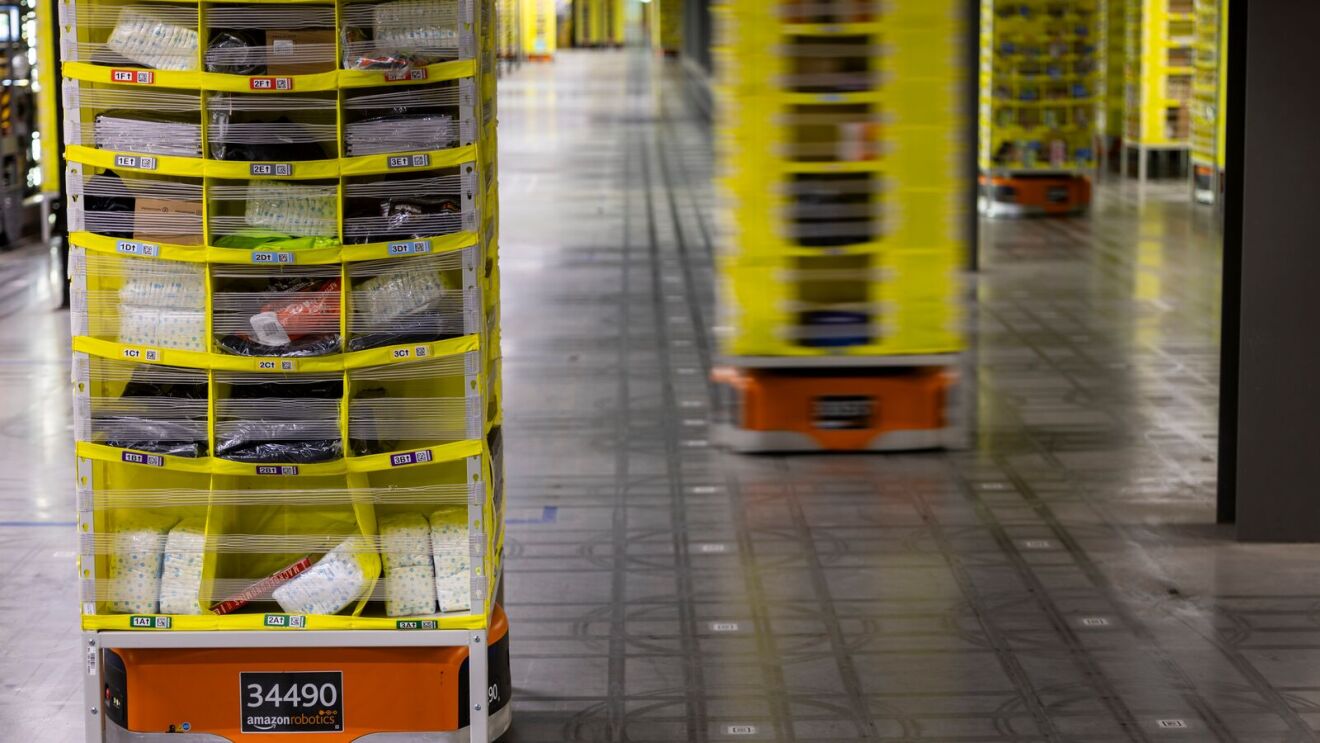
The technology we're building does more than move products—it's transforming workplace safety and creating new career opportunities. Our robots handle the heavy lifting and repetitive tasks, reducing physical strain. Through programs like Amazon Career Choice, a prepaid tuition program for front-line employees, we're helping employees gain the skills needed for technical roles in systems operations and other high-demand fields.
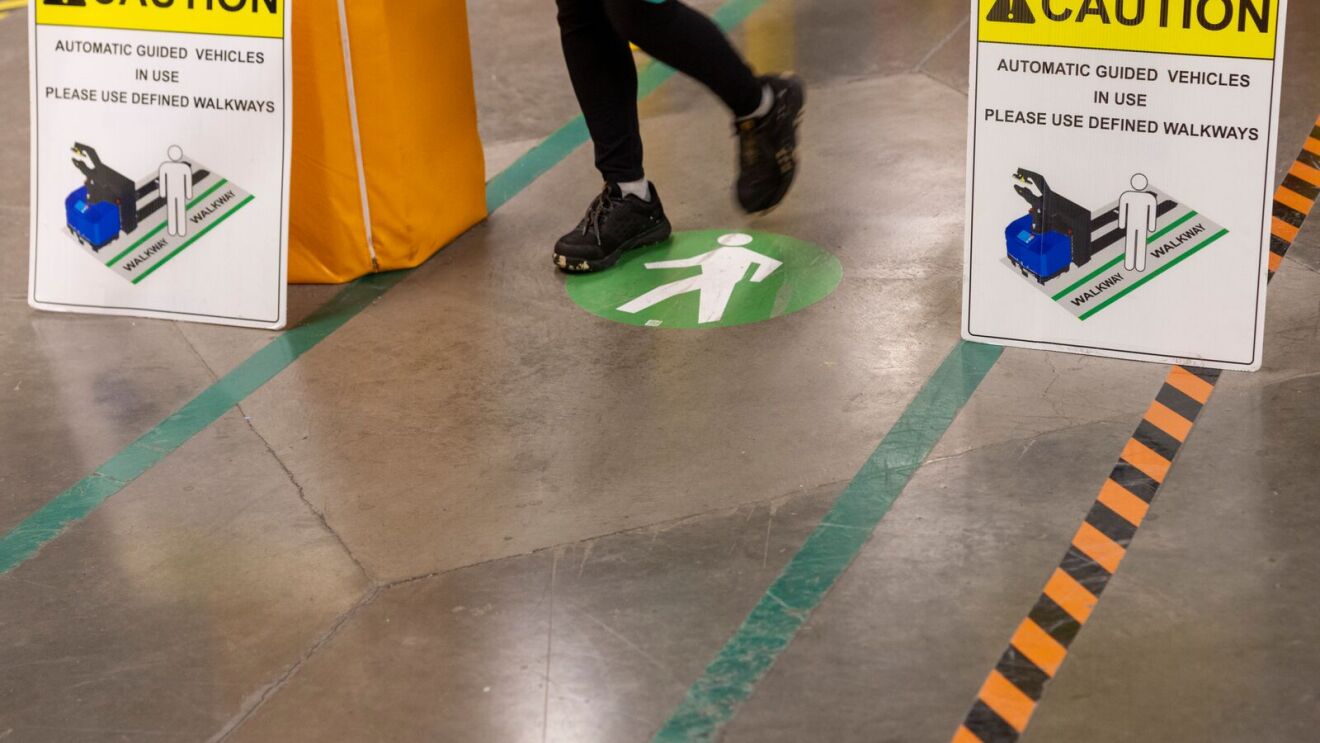
Looking ahead
The combination of our million-robot milestone and DeepFleet points to an exciting future where robotics and AI work together to reimagine what's possible in fulfillment and delivery. Twelve years ago, we worked backwards from a simple problem: how to help employees access inventory more efficiently. Today, we're applying the latest AI technology to make our entire robot fleet smarter, ultimately delivering better value to our customers through faster service and lower costs.
This is just the beginning. As DeepFleet learns from more data, it will continue to get smarter—driving deeper efficiencies, unlocking more selection closer to customers, and reimagining what's possible in robotic logistics. I can't wait to share more about where this journey takes us.
Next, learn how Amazon has upskilled over 700,000 employees globally through prepaid education and training programs.
Trending news and stories
- Everything you need to know about ‘Thursday Night Football’ on Prime Video
- ‘Thursday Night Football’ 2025 schedule: How to watch live on Prime Video
- How to watch ‘Oh. What. Fun.’ on Prime Video
- How Amazon Pharmacy has helped customers save more than $100 million on prescription medications like GLP-1s and insulin

